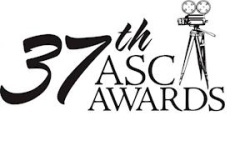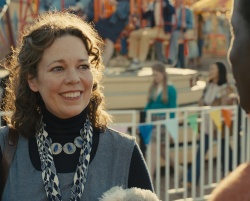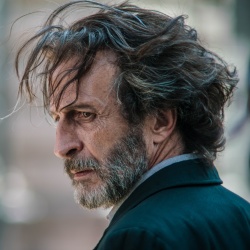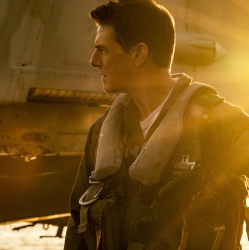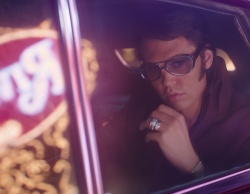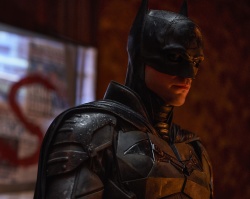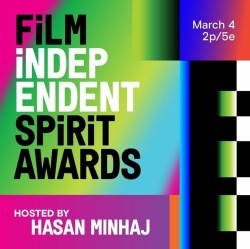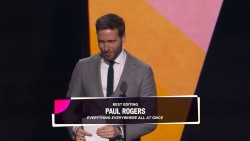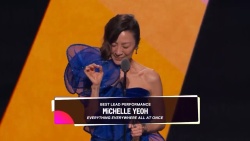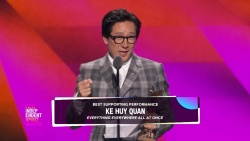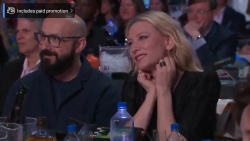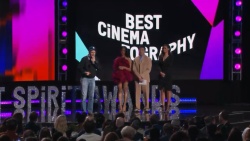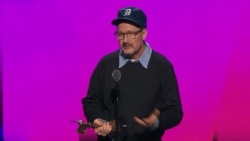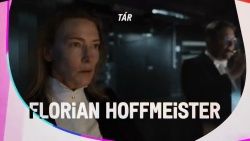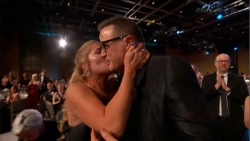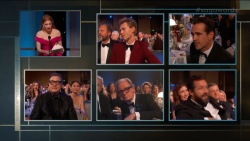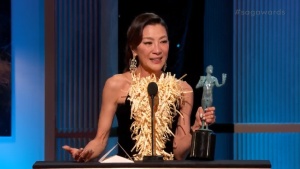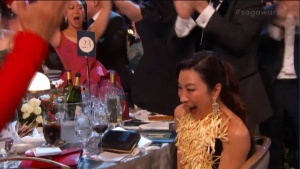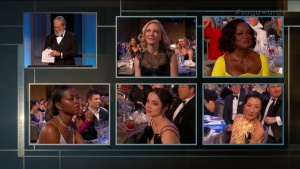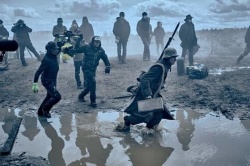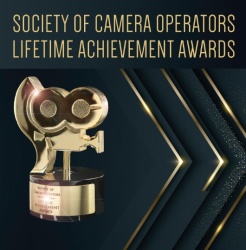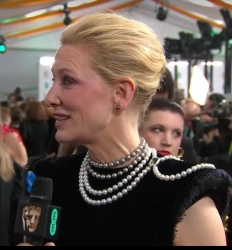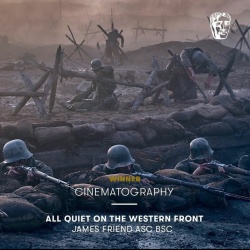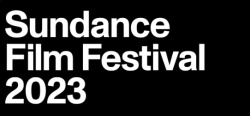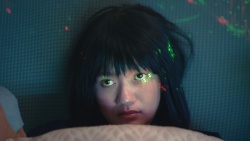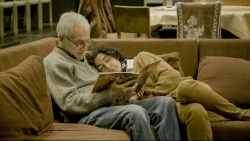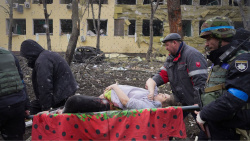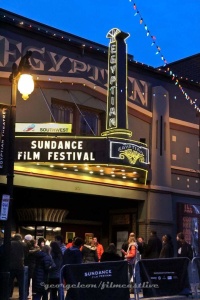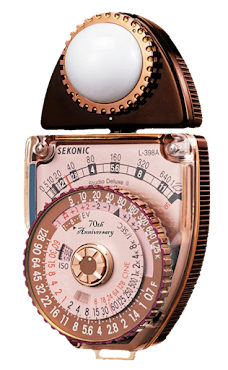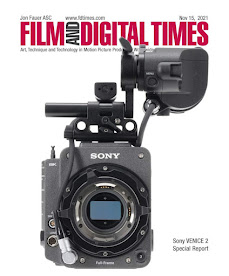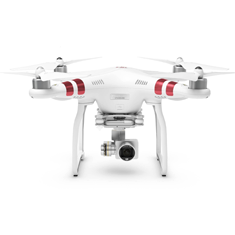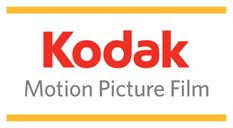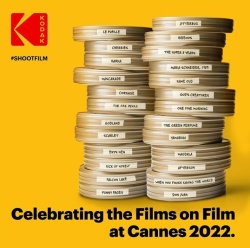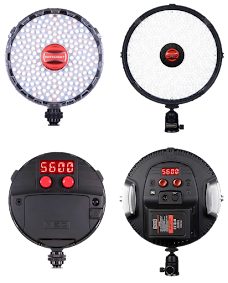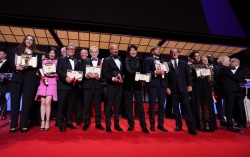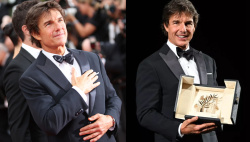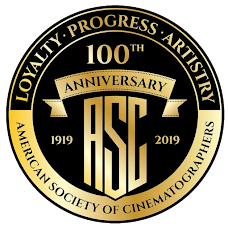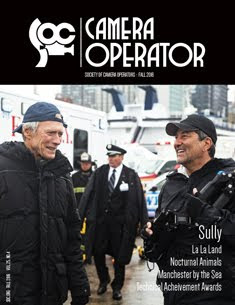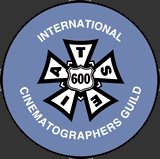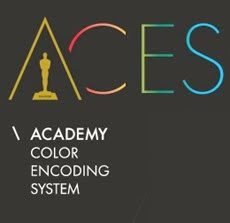PANASONIC DEBUTS THE VARICAM® 35
Panasonic will Debut at NAB Show, a New 4K Camera/Recorder, VariCam 35, With New Super 35MM MOS Sensor, AVC-ULTRA Codecs For 4K. Ultimate Image Production for Cinema and Episodic Drama; Breakthrough Modular Design Enables Docking Either 4K or 2/3-Inch Camera Head to Same Recording Module
The VariCam® 35, incorporates a newly-developed super 35mm MOS image sensor and the company’s AVC-ULTRA family of video codecs. The new camera’s superb image handling in multiple formats including 4K, UHD, 2K and HD make it an unparalleled tool for high-end filmmaking, and commercials and episodic production as well as live 4K events.
With its innovative design, the 4K camera module unit (AU-V35C1) is separate but dockable to the recording module unit (AU-VREC1), which is also interchangeable with Panasonic’s new 2/3” camera module unit (AU-V23HS1) (see separate news release). This system flexibility can be expanded with an umbilical cable between the s35mm 4K camera and the AVC-ULTRA recorder, providing “box” camera functionality for jibs, cranes and other “remote” camera needs. This common recorder module is also interchangeable with Panasonic’s new 2/3” 1080p camera, enabling professionals to switch between s35mm and 2/3” camera heads to best suit their creative needs.
“Evoking the VariCam heritage of gorgeous, cinematic image rendition, this VariCam 35 establishes new standards for 4K production,” said Steve Cooperman, Product Manager, Panasonic System Communications Company of North America. “With its expanse of formats ranging from flawless 4K RAW output to more practical 4K, UHD, 2K and HD capture, the VariCam 35 represents a matchless option for premier digital capture.”
The VariCam 35 utilizes a new Panasonic super 35mm MOS sensor for 4096 x 2160 (17:9) 4K image capture; this imager when combined with the AVC-ULTRA codecs for 4K enables very manageable and practical 4K production file sizes. The new imager boasts an impressive 14+ stops of latitude, and faithfully captures high-contrast, wide dynamic range imagery without compromise. Powerful color management capabilities provide a much extended color gamut for impeccable image fidelity, and permit support for an Academy Color Encoding System (ACES) workflow for full fidelity mastering of original source material.
Among the camera/recorder’s top-level production features are real-time, high frame rate, variable speed 4K recording up to 120fps, proving the capability for master level 2K/FHD recording; and advanced workflows with parallel simultaneous 4K/ UHD, reference 2K/HD and proxy recordings for in-camera on-set color grading and monitoring / editing ease. The camera also features a newly-developed OLED electronic viewfinder (EVF) with optical zoom functionality. Lastly, 24-bit LPCM audio is added for in-camera audio master recording.
The VariCam 35 will deliver an unprecedented breadth of recording formats, including 4K and UHD in AVC-ULTRA 4K, and 2K and FHD in AVC-Intra 100/200.* Addressing the need for high-speed file exchange, the camera encodes high-resolution proxy files in parallel with 4K and 2K production formats, enabling fast, efficient offline editing, at bit rates from 6 Mbps down to 1.5Mbps. Wireless workflows for proxy streaming and metadata management will also be available.
The VariCam 35 will use Panasonic’s new expressP2 card for high frame rate and 4K recording (see separate news release). The camera is equipped with a total of four memory card slots, two for expressP2 cards and two for microP2 cards. The new expressP2 card can record up to 130 minutes of 4K/24p content. The microP2 card is designed for recording HD or 2K at more typical production frame rates.
Professional interfaces include: 3G-HD-SDI x4 for 4K QUAD output; 3G-HD-SDI x2 for RAW output; an HD-SDI out for monitoring (down-converting from 4K); and two XLR inputs to record four channels of 24-bit, 48KHz audio. A multi-connector facilitates docking the camera head to the recording module. In another striking design innovation, the VariCam 35 boasts a removable control panel to facilitate real-time control and easy access when the camera is in a fixed position. The VariCam 35 features a standard 35mm PL mount.
The VariCam 35 will launch fall 2014, with pricing to be announced. For further information about Panasonic professional video products, visit www.panasonic.com/broadcast.
CINE LENSES SHOWCASING IN NABSHOW
NAB Show 2014. As camera makers make strides to 4K imaging, lens makers are challenged to provide high resolution prime and zoom lenses to deliver high-quality images to the camera sensor.
ARRI will showcase a range of seven high-performance prime lenses from the ARRI/Zeiss Master Anamorphic series. The Master Anamorphic series are the 50 mm T1.9, MA 35 mm, T1.9, 75 mm T1.9,100 mm T1.9, the 40 mm T1.9 and 60 mm T1.9. The 135 mm T1.9 will be showcased in NAB 2014. Small in size, very lightweight, fast and with minimal distortion, the lenses represent a significant step forward in the technology and practicality of anamorphic cinematography for 35 mm format digital and film cameras. They are designed to provide beautiful out-of-focus backgrounds and a smooth, cinematic look, while be as easy to use on set as other modern cine lenses.
CANON is introducing it first 35mm zoom lens with servo handgrip for documentary, handheld or ENG.Canon’s Cine-Servo 17-120 mm T2.9-3.9 zoom seems impossibly small for a lens that can deliver superb image quality with so much range.The servo focus/iris/zoom handgrip detaches with 3 screws. When re-installed, there’s no need for manual re-alignment.
ARRI will showcase a range of seven high-performance prime lenses from the ARRI/Zeiss Master Anamorphic series. The Master Anamorphic series are the 50 mm T1.9, MA 35 mm, T1.9, 75 mm T1.9,100 mm T1.9, the 40 mm T1.9 and 60 mm T1.9. The 135 mm T1.9 will be showcased in NAB 2014. Small in size, very lightweight, fast and with minimal distortion, the lenses represent a significant step forward in the technology and practicality of anamorphic cinematography for 35 mm format digital and film cameras. They are designed to provide beautiful out-of-focus backgrounds and a smooth, cinematic look, while be as easy to use on set as other modern cine lenses.
THALES ANGENIEUX will showcase its Optimo DP Series 25-250 mm 10X zoom lens, designed to provide the perfect combination of zoom ratio, aperture and price.The proliferation of 4K digital screens and the advent of Ultra definition television are escalating the demands for high quality motion picture content.
FUJINON is presenting in NABShow a new 25-300 mm joins the growing Cabrio series PL zoom lens family. Its range extends beyond the familiar 10:1 ratio — offering a 12:1 zoom in a comfortable size and weight. It is intended to be used as an all-around zoom lens for exteriors, locations, action, aerials, sports, cars, running shots, as well as interiors. With a size and weight comparable to the Fujinon Premier 24-180, the new Fujinon Cabrio 25-300 provides a longer range of focal lengths. A detachable digital servo drive unit with Focus, Iris and Zoom motors will be an option mid-year. The lens has rear flange focal depth adjustment. Macro (close-up) capability is available standard on the lens.
SCHNEIDER OPTICS announces a new family of prime lenses specially designed and built for digital cinematography with full-frame sensor HDSLR and other professional cameras. Built in Germany by Schneider-Kreuznach, the new Schneider-Kreuznach Xenon FF-Prime Lenses are the latest addition to the company’s line of high-end optics. The first focal lengths being introduced in the Xenon FF-Prime series are 25mm T2.1, 35mm T2.1, 50mm T2.1, 75mm T2.1, and 100mm T2.1. They are available in changeable Nikon F, Canon EOS or PL mounts.
COOKE will premier its Anamorphic/i Prime lenses with seven focal lengths featuring an oval bokeh, and designed for film and digital cameras. They feature aberration correction over the entire image area. The company will also showcase its Metrology lens test projector.
CW SONDEROPTIC will present its Leica Summicron-C Cine lenses with 10 focal lengths between 18 and 135 mm. These are among the smallest and lightest premium prime lenses available. The lenses feature custom coatings to closely match the color and natural skin tones of the Leica Summilux-C lenses while exhibiting excellent flare suppression with very low chromatic aberration and distortion.
CHROSZIEL will unveil their Aladin MKII 4K live broadcast wireless lens control system which was successfully used at both the French Open and the soccer Champions League in 2013 and is optimized for “Cine-Style” lenses and broadcast cameras. Also new is the Chrosziel Magnum wireless system which is available in three models: single-axis focus only, an upgradeable system for two-axis, and a complete focus/iris system.
THE CAMERAS TO SEE AT 2014 NAB SHOW
By George Leon
Much of the camera buzz at the 2014 NAB Show will be about 4K imaging, although there’s still a thriving market for conventional HD camcorders as well.
ARRI will introduce its AMIRA, a versatile documentary-style camera that combines exceptional image quality and affordable CFast 2.0 workflows. It sports an ergonomic design optimized for single-operator use and extended shoulder-mounted operation. It features in-camera grading with preloaded looks based on 3D look up tables, as well as 200 fps slow motion.
BLACKMAGIC DESIGN is holding off until the first day of the NAB Show to announce its product lineup, but expect the company to return with its current lineup of cameras including the Blackmagic Cinema Camera, Pocket Cinema Camera, and Production Camera 4K.
CANON will show its Cinema EOS C500 4K digital cinema camera, which capitalizes on the groundbreaking ergonomic design of the EOS C300 camera, and offers a Super 35 mm, 8.85-megapixel CMOS image sensor, DIGIC DV III image processor and an expansive range of recording and output options specifically for 4K and 2K image acquisition.
FOR-A will showcase its FT-One high-speed camera, designed for super-slow-motion acquisition with 4K resolution at up to 900 frames per second. Internal RAM memory holds nearly 10 seconds of 4K content shot at 900 fps, and this can be transferred to optional internal SSD cartridges.
GRASS VALLEY will show the latest models in its LDX series and the LDX Compact series of advanced imaging cameras, including the LDX Première, LDX WorldCam, LDX Elite and the LDX Flex. The company will also showcase its XCU eXchangeable control unit.
HITACHI will introduce the Z-HD6000 CMOS HDTV studio camera which features a 2/3-inch 2.6 megapixel 1920 x 1080 CMOS RGB sensors. The camera provides greater operational efficiency as its head provides extra power and communications, eliminating the need for extra wiring and complexity not normally available in cameras of this class.
IKEGAMI will host an 8K technology exhibit to give attendees a up-close look at the latest advances in this extremely high-resolution format, Super Hi Vision. The company will also showcase its HDK-97ARRI, developed in collaboration with ARRI. This is a broadcast-style production camera with digital cinema characteristics. Also featured is Ikegami’s Unicam HD camera line which includes multiformat HD cameras with 3G-SDI 1080/59.94p performance.
I-MOVIX will present its X10 UM (Ultra Motion) Phantom-based high-speed camera system that provides frame rates of up to 2,600 in 1080i or up to 5,600 in 720p with instant replay. The company will also showcase its X10 SSM (Super Slow Motion) camera system, which delivers up to 10x normal speed capture in full HD resolution.
JVC will introduce the GYHM850 ProHD shoulder-mount camcorder which features a built-in streaming engine, FTP and 4G LTE connectivity. It provides live HD transmission directly from the camera without any external bonded cellular technology. The camera sports an interchangeable Fujinon 20x autofocus zoom lens, dual SDHC/SDXC card slots for simultaneous or relay (continuous) recording and native file recording compatible with most NLE systems. Also look for the GY-HM890 ProHD shoulder-mount camcorder with all the features of the HM850 plus multicamera production capability.

PANASONIC will unveil three new cameras, a handheld camcorder and a pair of new Varicams. The AJ-PX270 P2 HD camcorder is Panasonic’s first capable of recording to P2 and microP2 cards in the company’s AVC-ULTRA codec. The 4K, PL-mount Varicam 35 employs a single 35 mm sensor to mount cinestyle lenses and shoots 4K at up to 120 frames per second. The high speed Varicam HS shoots HD at up to 240 frames per second, and with its 2/3-inch 3MOS imagers, is designed to mount long lenses for sports and other event remotes.
LIES AND DECEIT IN COLOR. THE SEVENTH LIE.
By George Leon
Review
The Seventh Lie is the feature film directorial debut of James Hung. The Seventh Lie is a fresh departure from the light fare of many dramatic and action Chinese films on the international film market by compelling the audience to participate vicariously on an elliptical narrative presenting intertwined individual complex plots in a seamless linear manner.
Hung selected chaotic Hong Kong as the backdrop landscape to frame this dramatic dark narrative of the human condition into a series of four vignettes about the decay and downward spiral of truth and honesty as known by society into a web of lies, deception and betrayal through the eyes of an ensemble cast of flawed characters interconnected to each other on the different vignettes by a common denominator, what it seems to be similar to the famous seven sins, namely wrath, greed, lust, and envy. Corruption, contempt and the twisting of the word are the driving force on the narrative of this tale, but regardless of moments of despicable betray, redemption and a new found honesty prevails at the end.
Review
The Seventh Lie is the feature film directorial debut of James Hung. The Seventh Lie is a fresh departure from the light fare of many dramatic and action Chinese films on the international film market by compelling the audience to participate vicariously on an elliptical narrative presenting intertwined individual complex plots in a seamless linear manner.
Hung selected chaotic Hong Kong as the backdrop landscape to frame this dramatic dark narrative of the human condition into a series of four vignettes about the decay and downward spiral of truth and honesty as known by society into a web of lies, deception and betrayal through the eyes of an ensemble cast of flawed characters interconnected to each other on the different vignettes by a common denominator, what it seems to be similar to the famous seven sins, namely wrath, greed, lust, and envy. Corruption, contempt and the twisting of the word are the driving force on the narrative of this tale, but regardless of moments of despicable betray, redemption and a new found honesty prevails at the end.
(password: doyoulie)
The very physical and quasi-comedic performance of the cast comprised by Hong Kong top caliber actors (Josie Ho, Ronald Cheng, Loi Hong Pang and Wai Kai Leung Tommy) portraying assassins, cheating couples, corrupted policemen, disgruntled spouses, sexual deviants, runaway brides and a redeeming psychic are the right catalyst to this mixed-genre narrative as written and directed by Hung, who also utilized claustrophobic locations such as hotels rooms and hallways to determining time, landscape and space as another character to tell the story. (Hotels rooms in Hong Kong are rather small in contrast to the urban architectural grandeur displayed by the city).
The cinematography by Ka On Ronnie Au and production design by Rose Hung worked seemingly with Hung's vision. The photography and art design (Janet Chan) of every location/vignette is under its own color palette, running from a clean surgical steel look (while an assassin is choosing which tailored suit, shirt, and tie to wear before going out to kill again) to the warm tungsten glowy look of a runaway bride perplexed by the possibilities of her own future while hiding from her future husband and bride maids crisscrossing the city under the neon and traffic lights to a final rendezvous with a prophetic psychic on an idyllic park illuminated with colorful china balls and lanterns.
The low budget film was shot on a single Canon 1DC with Canon cinema lenses and recorded to SanDisk’s Extreme Pro CFast 2.0 cards.
LIGHTING FOR A LEGEND & CONFIGURATION OF THE EOS C500 PL
Here is the coverage of a story by two different sources, which I decided to merge into one posting given both articles- a journalistic blog posting by David Heuring and a marketing video by Canon- are intrinsically inseparable to a cinematographer's discerning eye to better understand the production process involved in the making of the short film The Human Voice.
Lighting for a Legend — Rodrigo Prieto Shoots Sophia Loren Short in RomeAs originally published on September 4, 2013 in ASC Parallax View by David Heuring
with the exception of two still photos credited to other source.
Rodrigo on the set of THE HUMAN VOICE.
© Jon Fauer, ASC
Rodrigo Prieto, ASC, AMC recently finished a unique short film that stars Sophia Loren and was directed by Loren’s son, Edoardo Ponti. The title is The Human Voice, and the script is based on a one-person stage play by Jean Cocteau. The 25-minute film was filmed over the course of about two weeks, mostly on a soundstage in Rome, with some flashback scenes shot along the coast in Naples.
Rodrigo says that says that as a teenager, Loren was struck by another screen version of the story starring Anna Magnani, whose performance helped inspire Loren to eventually become an actress. She’d dreamed of taking on the role ever since. The Human Voice depicts a long, intermittent phone conversation between a woman and her lover, who is leaving her for another woman. At first, she tries to put a brave face on things. But eventually her emotions pour out. The male half of the doomed relationship is never seen by the audience.
Rodrigo and first AC Zoran Veselic at work.
©Jon Fauer, ASC
Rodrigo met Ponti on a panel at the Tribeca Film Festival, where they each had a short screen in the same program. Rodrigo’s short, which he directed and shot, was titled Likeness and starred Elle Fanning. Ponti’s film, Il turno do note lo fanno le stelle, starred Julian Sands and Nastassja Kinski. “Edoardo approached me after the event and told me about The Human Voice,” says Rodrigo. “I was immediately fascinated.”
Their earliest conversations about the look of the film were conducted via Skype, with Ponti in Rome and Rodrigo in Santa Fe, New Mexico, where he was finishing The Homesman for director/star Tommy Lee Jones. “Edoardo wanted it to feel romantic, but at the same time realistic,” says Rodrigo. “He didn’t want an overly dramatic image — he said the drama would be in the words and in the performance. I chose to use Cooke S4 lenses as I felt they have a pleasing quality that would work well for a monologue piece.”
Changes in the time of day offered Rodrigo a range of lighting opportunities.
©Jon Fauer, ASC
Ponti had done his previous short on the Canon C300, so he had a relationship with Canon. That led in part to the decision to shoot The Human Voice on a Canon C500 camera. During a conversation with Rodrigo, Canon’s Tim Smith mentioned that the C500, in addition to its ability to capture images in 4K 10-bit files, can shoot 2K files with 12-bit color depth. The camera incorporates an onboard Codex S Plus recorder that facilitates either format.
“In testing, I noticed that especially on skin tones and some fruit I placed on a bowl next to the stand-in, the subtlety of color was best captured in 2K 12-bit,” says Rodrigo. “For our purposes, the differences in resolution between 4K and 2K were negligible, but the proper rendering of the many colors in her face was essential.”
The opportunity to work with the legendary actress was intimidating. “It was an incredible privilege, honor and responsibility to photograph an icon of world cinema like Sophia,” he says. “It did scare me a little bit at first. She has been lit by the best photographers and cinematographers in the world. I know that she understands lighting, especially her own — she knows what looks good. I think that feeling of fear was actually positive in the end. I think it helped me find ways to lovingly photograph her while enhancing the dramatic curve of the piece.
“Edoardo was instrumental in easing these fears,” says Rodrigo. “He is a very generous director who likes to have a fun atmosphere, which is something I enjoy. I think I run a disciplined set, but I appreciate being able to laugh and joke a bit. Sets are tense enough already, with budgets and schedules causing stress. I think it’s important to feel relaxed and happy while you work.
Edoardo Ponti and Sofia Loren on the set
of the Human Voice © BestImage
“The other great privilege for me was witnessing the mother-son relationship, and how Sophia’s dream of playing this role was becoming a reality through her son,” says Rodrigo. “Seeing them on the set together, through these emotional moments, was very touching. Seeing them find the right performance and direction as a family was very beautiful and special.”
Prior to The Human Voice, Rodrigo shot two completely dissimilar projects, but he reprised the “mostly film-some digital” approach he used on Argo, which of course won Best Picture and two other Oscars this past February. For The Homesman, he shot Super 35 film format for 85 or 90% of the film, but used the Sony F55 in low light situations, including some scenes where he shot with just an oil lamps and candles for illumination. On The Wolf of Wall Street for Martin Scorsese, he shot with Hawk anamorphic lenses and some scenes with spherical Master Prime lenses — for the most part on film and sometimes on Alexa for low light and visual effects.
For the time being, Rodrigo is shooting commercials and enjoying some time close to home.
Canon Collaborations: The EOS C500 Configured by the Crew of Human Voice
A conversation between three talented filmmakers, as director Edoardo Ponti, Cinematographer Rodrigo Prieto, ASC, AMC, and First AC Zoran Veselic discuss how they configured a Cinema EOS C500 PL camera to shoot the intimate short film, Human Voice.
BEST CINEMATOGRAPHY NOMINEES FOR THE 86TH OSCARS®
BEST CINEMATOGRAPHY NOMINEES FOR THE 86TH OSCARS®
These are the nominees in the Cinematography category for the 86th Academy Awards with technical specifications. Note that the camera body of choice used by all these talented directors of photography in the nominated films was an Arri film body or a digital camera used for negative film stock photography or high definition digital acquisition.
On matter of lenses, the Panavision C-Series Anamorphic primes, ATZ/AW22 zooms and Panavision Primos were the choice for two of the nominees.
Phedon Papamichael, ASC used Panavision Anamorphic lenses in Nebraska to capture the essence of Alexander Payne's color graded black and white road trip narrative. "The Panavision C-Series Anamorphic lenses helped me achieve a textural quality I was trying to find for Nebraska - the older glass helped reduce the sharpness off the digital image and gave it a more film-like cinematic feeling" said Papamichael.
Bruno Delbonnel ASC, AFC shoot "Inside Llewyn Davis" a York folk music story in the ‘60 on a single 35mm film stock, Kodak Vision T500/5219 1:85 aspect ratio and the cameras were Arricam LT and ST using Cooke S4 lenses. “The movie has a lot of magenta and cyan, which you can’t really get from a lab process, or at least not as controlled,” Delbonnel states. “The blooming and diffusion we added gave the feel of uncoated lenses. But I actually shot with the super sharp Cooke S4’s, with nothing over the lens at all. Uncoated lenses are uncontrollable – flares, etc. – and I needed to control the light and clarity [during shooting] at all times.”
Delbonnel crafted imagery that is low contrast, with little or no sunlight. That approach fit well with the short New York winter days, which only provided about six hours of daylight. “I don’t like the term ‘look,’” Delbonnel says. “To me, a ‘look’ is just fashion. You see it in fashion photography. It’s just an aesthetic, and in a couple of years it will be something else. It’s about emotion and the story. For Inside Llewyn Davis, I was looking for sadness, so I had to define it. Is it yellow? Is it green? I had to find a way to make this sadness with color and density and contrast. That is my job as a cinematographer.”
"The Grandmaster" charts the mostly true story of Ip Man (Tony Leung), the martial arts master who would eventually teach a young Bruce Lee how to fight. The film was shot on the last roll of Fujifilm ever produced.
Fujifilm informed him and Mr. Le Sourd, that it would be delivering the company’s final roll to them but Le Sourd isn't absolutist about celluloid. "I think everything is possible on digital," he says. "‘Gravity' is amazing work and we couldn't do it before. It's a great adventure today to be a working cinematographer."
Fujifilm informed him and Mr. Le Sourd, that it would be delivering the company’s final roll to them but Le Sourd isn't absolutist about celluloid. "I think everything is possible on digital," he says. "‘Gravity' is amazing work and we couldn't do it before. It's a great adventure today to be a working cinematographer."
When the cinematographer Philippe Le Sourd teamed up with the director Wong Kar-wai to make “The Grandmaster,” he was expecting a six-month project. Those six months turned into three years, making the production felt as epic as the life story at the heart of the film: that of the kung fu master Ip Man.
Philippe Le Sourd’s outstanding cinematography brings scintillating action sequences into sharp focus -- a crucial factor given Wong's penchant for close-ups that can seemingly reveal a universe in the burning tip of a cigarette to the shape and reflective transparency of rain fall turned into motivators of camera movement.
Le Sourd shot this masterly
crafted narrative using Arricam ST/LT and Arriflex 435 cameras, "the
workhorse of the industry", a MOS camera with variable ramping speed
instrumental to capture in detail the action sequences. All magazines
were loaded with the last rolls manufactured by Fujifilm, the
Eterna 8663 and 8673. For the most vivid detailed slow speed action
sequences under the rain, Le Sourd opted for the Phantom Flex, an high
speed digital 2.5K camera, capable of shooting from 5 frames-per-second
(fps) to over 10,750 fps. The result is truly amazing as lensed by
LeSourd.
A GUIDE TO HAND HELD CAMERA OPERATION W/ SEAN BOBBIT, BSC
A Guide to Handheld Camera Operating with Sean Bobbitt, BSC, from the ARRI Workshop at this year's Camerimage Film Festival. This is a must see presentation for all cameraman. Enjoy!
Sean Bobbit, BSC and Steve McQueen on the set of 12 Years a Slave.
Bobbit is a Film Independent Spirit Awards Best Cinematography Nominee.
BEST CINEMATOGRAPHY NOMNEES. SPIRIT AWARDS 2013
Nominations Best Cinematography
Best Cinematography
Sean Bobbitt, 12 Years A Slave
Benoit Debie, Spring Breakers
Bruno Delbonnel, Inside Llewyn Davis
Frank G. Demarco, All Is Lost
Matthias Grunsky, Computer Chess
Best Director
Shane Carruth, Upstream Color
J.C. Chandor, All Is Lost
Steve McQueen, 12 Years A Slave
Jeff Nichols, Mud
Alexander Payne, Nebraska
Best Feature
12 Years A Slave
All Is Lost
Frances Ha
Inside Llewyn Davis
Nebraska
Best Screenplay
Woody Allen, Blue Jasmine
Julie Delpy, Ethan Hawke & Richard Linklater, Before Midnight
Nicole Holofcener, Enough Said
Scott Neustadter & Michael H. Weber, The Spectacular Now
John Ridley, 12 Years A Slave
Subscribe to:
Posts (Atom)


















































